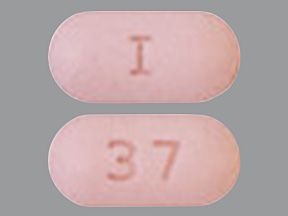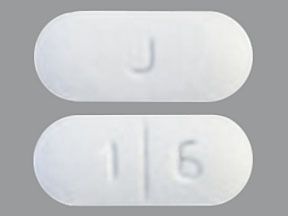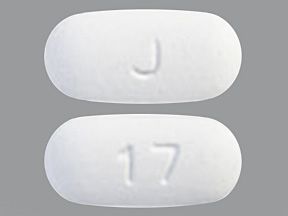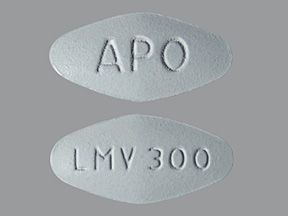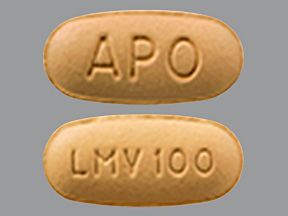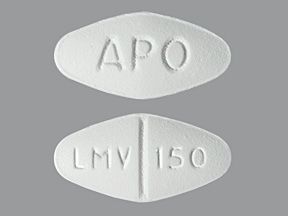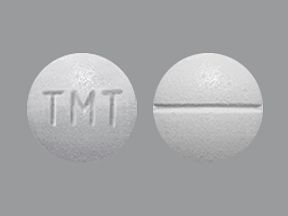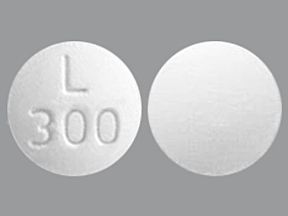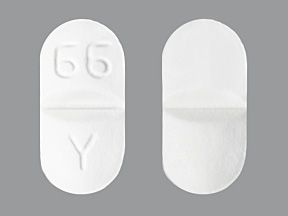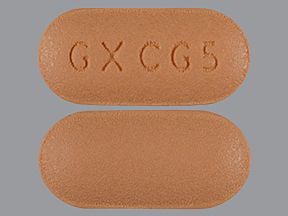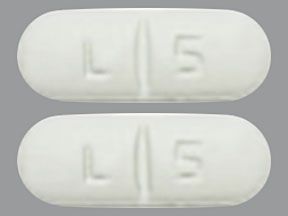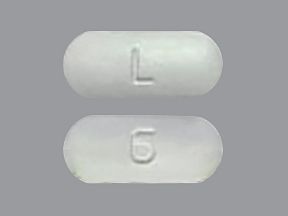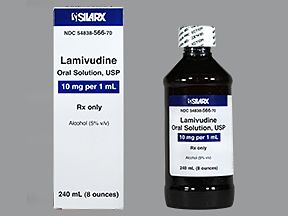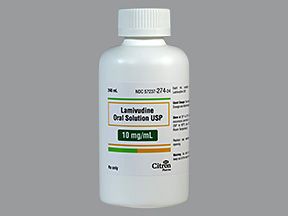Lamivudine oral tablet is a generic prescription drug used to treat HIV alongside other antiretroviral drugs, and to treat long-term hepatitis B. It’s usually taken once or twice per day.
- Lamivudine is available as a generic drug and a brand-name drug. Brand name: Epivir.
- Lamivudine comes as oral tablets and an oral solution.
- Lamivudine is used to treat HIV and hepatitis B (HBV). Different strengths are used for each condition, and your doctor will prescribe the dose that’s right for you.
Note: Lamivudine has boxed warnings. Boxed warnings are the most serious warnings from the Food and Drug Administration (FDA). For details, see the “Lamivudine warnings” section.
Lamivudine is a generic drug prescribed to treat HIV and hepatitis B (HBV) in adults and certain children. For HIV treatment, you’ll take lamivudine with other antiretroviral drugs.
Lamivudine comes as an oral tablet and an oral solution.
Lamivudine brand-name version
Lamivudine is available as the brand-name drug Epivir. (Epivir is used to treat HIV only.)
Lamivudine is a generic drug, which means it’s an exact copy of the active drug in a brand-name medication. Generic drugs are thought to be as safe and effective as the brand-name drug they’re based on. In general, generics usually cost less than brand-name drugs.
If you’d like to know more about using Epivir instead of generic lamivudine for HIV, talk with your doctor.
Lamivudine drug class
Lamivudine belongs to a class of drugs called nucleoside reverse transcriptase inhibitors (NRTIs). It’s a type of antiretroviral drug.
A class of drugs is a group of medications that work in a similar way. These drugs are often used to treat similar conditions.
How it works
Lamivudine limits the ability of HIV and HBV to replicate (make copies of themselves). This helps slow the progression (worsening) of the condition. The drug doesn’t cure HIV or HBV, however.
To replicate and spread in your body, HIV and HBV need to use an enzyme called reverse transcriptase. NRTIs such as lamivudine block this enzyme. This action prevents HIV and HBV from making copies as quickly, slowing down the spread of the viruses.
When lamivudine is used on its own to treat HIV, it can lead to drug resistance. It must be used in combination with other antiretroviral drugs for HIV.
Like most drugs, lamivudine may cause mild to serious side effects. The following lists describe some of the more common side effects that lamivudine may cause. These lists don’t include all possible side effects.
Keep in mind that side effects of a drug can depend on:
- your age
- other health conditions you have
- other medications you take
Your doctor or pharmacist can tell you more about the potential side effects of lamivudine. They can also suggest ways to help reduce side effects.
More common side effects
The more common side effects that can occur with lamivudine include:
- cough
- diarrhea
- fatigue
- headache
- malaise (general discomfort)
- nasal symptoms, such as a runny nose
- nausea
- mild allergic reaction
Serious side effects
Call your doctor right away if you have serious side effects. Call 911 if your symptoms feel life threatening or if you think you’re having a medical emergency. Serious side effects and their symptoms can include the following:
- Lactic acidosis or severe liver enlargement. Symptoms can include:
- abdominal pain
- diarrhea
- shallow breathing
- muscle pain
- weakness
- feeling cold or dizzy
- Pancreatitis (pancreas inflammation). Symptoms can include:
- abdominal bloating
- pain
- nausea
- vomiting
- tenderness when touching the abdomen
- Severe allergic reaction, also called anaphylaxis. Symptoms can include:
- sudden or severe rash
- breathing problems
- hives
- Liver disease. Symptoms can include:
- dark urine
- loss of appetite
- fatigue
- jaundice (yellowing skin)
- nausea
- tenderness in the stomach area
- Immune reconstitution syndrome in people with HIV, which can lead to infections. (As your immune system function improves with treatment, your body may start to respond to infections you’ve had in the past, such as pneumonia or tuberculosis.)
Side effects in children
In children with HIV, fever and cough were the most common side effects reported in lamivudine’s studies. In children with HBV, side effects were very similar to those seen in adults.
Allergic reactionFor some people, lamivudine can cause an allergic reaction. In general, symptoms of allergic reaction can be mild or serious.
What might help
If you have mild symptoms of an allergic reaction, such as a mild rash, call your doctor right away. They may suggest a treatment to manage your symptoms and can determine whether you should keep taking lamivudine.
If you have symptoms of a severe allergic reaction, such as swelling or trouble breathing, call 911 or your local emergency number right away. These symptoms could be life threatening and require immediate medical care.
If your doctor confirms you’ve had a serious allergic reaction to lamivudine, they may have you switch to a different treatment.
Lamivudine oral tablet can interact with several other medications. Different interactions can cause different effects. For instance, some can interfere with how well a drug works, while others can cause increased side effects.
Below is a list of medications that can interact with lamivudine. This list does not contain all drugs that may interact with lamivudine.
Before taking lamivudine, be sure to tell your doctor and pharmacist about all prescription, over-the-counter, and other drugs you take. Also tell them about any vitamins, herbs, and supplements you use. Sharing this information can help you avoid potential interactions.
If you have questions about drug interactions that may affect you, ask your doctor or pharmacist.
Emtricitabine
You should not take emtricitabine if you’re also taking lamivudine. They are similar drugs and taking them together can increase the dangerous side effects of emtricitabine. Drugs that contain emtricitabine include:
- emtricitabine (Emtriva)
- emtricitabine/tenofovir disoproxil fumarate (Truvada)
- emtricitabine/tenofovir alafenamide fumarate (Descovy)
- efavirenz/emtricitabine/tenofovir disoproxil fumarate (Atripla)
- rilpivirine/emtricitabine/tenofovir disoproxil fumarate (Complera)
- rilpivirine/emtricitabine/tenofovir alafenamide fumarate (Odefsey)
- emtricitabine/tenofovir disoproxil fumarate/elvitegravir/cobicistat (Stribild)
- emtricitabine/tenofovir alafenamide fumarate/elvitegravir/cobicistat (Genvoya)
Drugs that contain sorbitol
Taking sorbitol with lamivudine can decrease the amount of lamivudine in your body. This can make it less effective. If possible, avoid taking lamivudine with any drugs that contain sorbitol. This includes a variety of prescription and over-the-counter medications. A pharmacist can help you identify these medications.
If you must take lamivudine with drugs that contain sorbitol, your doctor will likely monitor your viral load more closely.
Your doctor will recommend the dosage of lamivudine that’s right for you. Below are commonly used dosages, but always take the dosage your doctor prescribes.
Forms and strengths
The following table shows the available forms and strengths of lamivudine’s generic and brand-name forms. Strengths are given in milligrams (mg) or mg per milliliter (mg/mL).
| Doses | |
|---|---|
| Lamivudine for HIV | • oral tablet: 150 mg, 300 mg • oral solution: 10 mg/mL |
| Lamivudine for HBV | • oral tablet: 100 mg • oral solution: 5 mg/mL |
| Epivir (brand-name lamivudine for HIV) | • oral tablet: 150 mg, 300 mg • oral solution: 10 mg/mL |
Note: The different strengths and forms of lamivudine are not interchangeable for HIV and HBV treatment. You should only take the dosage your doctor prescribes for you. See the “Lamivudine warnings” section for details.
Recommended dosages
Doctors typically prescribe lamivudine in tablet form. They might prescribe the oral solution for young children or people who have trouble swallowing tablets. Your doctor will recommend the dosage of lamivudine that’s right for you.
Dosage for HIV
For HIV in adults, lamivudine’s dosage is 300 mg per day, taken as either 150 mg twice per day or 300 mg once per day.
Dosage for HBV
For hepatitis B virus (HBV) in adults, lamivudine’s dosage is 100 mg once per day.
Children’s dosages
For HIV treatment in children: Lamivudine can be used in children 3 months and older who weigh at least 14 kg (about 31 lb). Your child might take lamivudine once or twice per day. The exact dosage is based on body weight and will be determined by your child’s doctor.
For HBV treatment in children: Lamivudine can be used in children 2 years and older. Your child will take lamivudine once per day. The exact dosage is based on body weight and will be determined by their doctor. The maximum dosage for this use is 100 mg per day.
If your child has trouble swallowing tablets, their doctor might prescribe lamivudine oral solution instead. The tablet form is recommended for children who weigh at least 14 kg and can swallow tablets, though.
How to take
Lamivudine tablets and solution should be swallowed. Your doctor will explain how much to take and how often. Be sure to follow their instructions. Do not stop taking lamivudine without talking with your doctor.
Questions about taking lamivudine
Below are some common questions about taking lamivudine.
- Can lamivudine tablets be chewed, crushed, or split? You can crush or split lamivudine tablets. You should not chew the tablets. If you have trouble swallowing pills, your doctor may be able to prescribe the oral solution form of lamivudine for you instead of the tablets.
- Should I take lamivudine with food? Lamivudine can be taken with or without food.
- Is there a best time of day to take lamivudine? Lamivudine can be taken at any time of day, but take it at about the same time(s) each day. This helps keep a steady level of the drug in your body, which helps keep your viral load low.
- What if I miss a dose of lamivudine? If you forget to take your dose, take it as soon as you remember. If it’s just a few hours until your next dose, wait and take your normal dose at the usual time. Take just one tablet at a time. Never try to catch up by taking two tablets at once. This could result in dangerous side effects.
- Will I need to use lamivudine long term? Lamivudine is typically used as a long-term treatment. If you and your doctor determine that it’s safe and effective for your condition, you’ll likely take it long term.
- How long does lamivudine take to work? How can I tell it’s working? Lamivudine begins to work after you take your first dose. But you likely won’t feel the drug working in your body. Your doctor will order tests throughout your treatment to check whether lamivudine is working. They’ll monitor your symptoms and your:
- Viral load: They’ll do a virus count to measure the number of copies of the HIV or HBV virus in your body.
- Number of CD4 cells (for HIV only): A CD4 count is a test that measures the number of CD4 cells in your body. CD4 cells are white blood cells that fight infection. An increased CD4 count is a sign that your treatment for HIV is working.
Overdose
Do not take more or less lamivudine than your doctor prescribes, as this can lead to harmful effects.
What to do in case you take too much lamivudine
Call your doctor if you think you’ve taken too much lamivudine. You can also call 800-222-1222 to reach America’s Poison Centers or use its online resource. But if you have severe symptoms, immediately call 911 or your local emergency number. Or go to the nearest emergency room.
This drug comes with several warnings.
Boxed warnings
Lamivudine has the following boxed warnings. Boxed warnings are the most serious warnings from the Food and Drug Administration (FDA). They alert doctors and patients about drug effects that may be dangerous.
Severe worsening of hepatitis B after stopping lamivudine: Stopping lamivudine can cause HBV to get severely worse. If you have HBV, your doctor will closely monitor your liver function while you take lamivudine. If your condition shows signs of worsening, they’ll have you start treatment for this.
Different formulations of lamivudine and HIV resistance: The different strengths of lamivudine are not interchangeable. If you take lamivudine for HBV and you also have HIV that’s not being managed, your HIV could become resistant to lamivudine treatment. This is because the dose for HBV is lower than the dose needed for HIV. Your doctor may recommend testing for HIV before and during lamivudine treatment for HBV. Be sure to take lamivudine exactly as prescribed by your doctor.
Lactic acidosis and severe liver enlargement with fatty liver warning
Lactic acidosis and severe liver enlargement with fatty liver have occurred in people who take lamivudine, with most occurring in females. If you have symptoms of these conditions, call your doctor right away. These symptoms can include abdominal pain, diarrhea, shallow breathing, muscle pain, weakness, and feeling cold or dizzy.
Note: In this article, we use the term “female” to refer to someone’s sex assigned at birth. To learn more about this topic, see this article comparing sex and gender.
Pancreatitis warning
Pancreatitis (pancreas inflammation) has occurred very rarely in people who take lamivudine. Signs of pancreatitis include abdominal bloating, pain, nausea, vomiting, and tenderness when touching the stomach area. People who have had pancreatitis in the past may be at greater risk.
Liver disease warning
You could develop liver disease while taking lamivudine. If you already have hepatitis B or hepatitis C, your hepatitis could get worse if you develop further liver problems. Symptoms of liver disease may include dark urine, loss of appetite, fatigue, jaundice (yellowing skin), nausea, and tenderness in the stomach area.
Immune reconstitution syndrome warning
With immune reconstitution syndrome, your recovering immune system causes infections you’ve had in the past to return. Examples of past infections that could return include fungal infections, pneumonia, or tuberculosis. Your doctor may need to treat the infection if this happens.
Warnings for people with certain health conditions
For people with hepatitis C: If you have HIV and hepatitis C virus (HCV) and you take interferon and ribavirin for HCV, you could experience liver damage. Your doctor will monitor you for liver damage if you take lamivudine with these drugs.
For people with pancreatitis: People who have had pancreatitis in the past may be at greater risk of developing the condition again when taking this drug. Symptoms of pancreatitis may include abdominal bloating, pain, nausea, vomiting, and tenderness when touching the stomach.
For people with reduced kidney function: If you have kidney disease or reduced kidney function, your kidneys may not process lamivudine from your body quickly enough. Your doctor may decrease your dosage so that the drug doesn’t build up in your body.
Warnings for other groups
For pregnant people: More information is needed about lamivudine use during pregnancy. Lamivudine should be taken during pregnancy only if the potential benefit outweighs the potential risk to the pregnancy. Call your doctor if you become pregnant while taking this drug.
For people who are breastfeeding:
- If you have HIV: The
Centers for Disease Control and Prevention (CDC) recommends that people with HIV do not breastfeed to avoid transmitting HIV through breast milk. - If you have HBV: Lamivudine does pass through breast milk. However, there are no adequate studies that show the effects it may have on a child who is breastfed or on milk production.
If you breastfeed your child, talk with your doctor. Discuss the benefits of breastfeeding as well as the risks of exposing your child to lamivudine versus the risks of not having treatment for your condition.
For older adults: If you are age 65 years or older, your body may process this drug more slowly. Your doctor may start you on a lowered dose so that too much of this drug does not build up in your body.
Whether you have health insurance or not, cost may be a factor when you’re considering lamivudine. What you’ll pay for lamivudine may depend on several things, such as your treatment plan and the pharmacy you use.
Here are a few things to consider regarding cost:
- Cost information and savings coupons: You can visit Optum Perks to get price estimates of what you’d pay for lamivudine when using coupons from the site. See the coupon options below. (Note: Optum Perks coupons cannot be used with any insurance copays or benefits.)
- Savings program: Some websites provide details about drug assistance programs, ways to make the most of your insurance coverage, and links to savings cards and other services. Two such websites are:
Keep these considerations in mind if your doctor prescribes lamivudine for you.
Storage
- Keep lamivudine tablets at room temperature between 68°F and 77°F (20°C and 25°C).
- The tablets can occasionally be in temperatures between 59°F and 86°F (15°C and 30°C).
- Keep bottles of tablets tightly closed to keep them fresh and potent.
- Don’t store this medication in moist or damp areas, such as bathrooms.
Clinical monitoring
Clinical monitoring while you take this drug may include:
- appointments with your doctor
- regular blood tests for liver function and CD4 count
- other testing
Availability
- Call ahead: Not every pharmacy stocks this drug. When filling your prescription, be sure to call ahead to make sure they carry it.
- Specialty pharmacies: This drug is often available from specialty pharmacies through your insurance plan. These pharmacies operate like mail-order pharmacies and ship the drug to you.
- HIV pharmacies: In larger cities, there may be HIV pharmacies where you can have your prescriptions filled. Ask your doctor if there’s an HIV pharmacy in your area.
Prior authorization
Many insurance companies require a prior authorization for this drug. This means your doctor will need to get approval from your insurance company before your insurance company will pay for the prescription.
There are many drugs and combinations that can treat HIV and HBV infection. Some may be more suitable for you than others. Talk to your doctor about possible alternatives.
Disclaimer: Healthline has made every effort to make certain that all information is factually correct, comprehensive, and up to date. However, this article should not be used as a substitute for the knowledge and expertise of a licensed healthcare professional. You should always consult your doctor or other healthcare professional before taking any medication. The drug information contained herein is subject to change and is not intended to cover all possible uses, directions, precautions, warnings, drug interactions, allergic reactions, or adverse effects. The absence of warnings or other information for a given drug does not indicate that the drug or drug combination is safe, effective, or appropriate for all patients or all specific uses.





